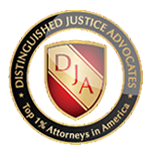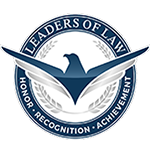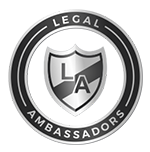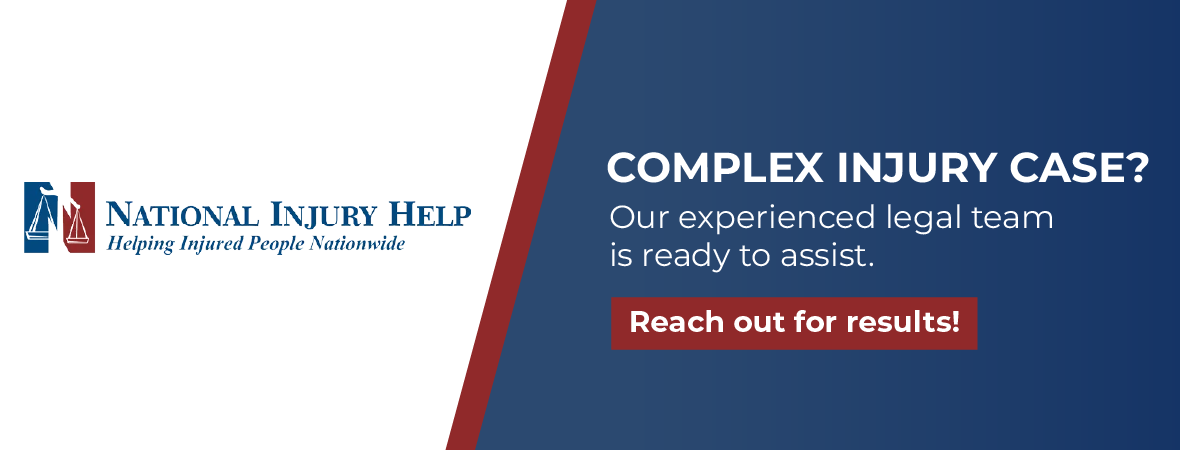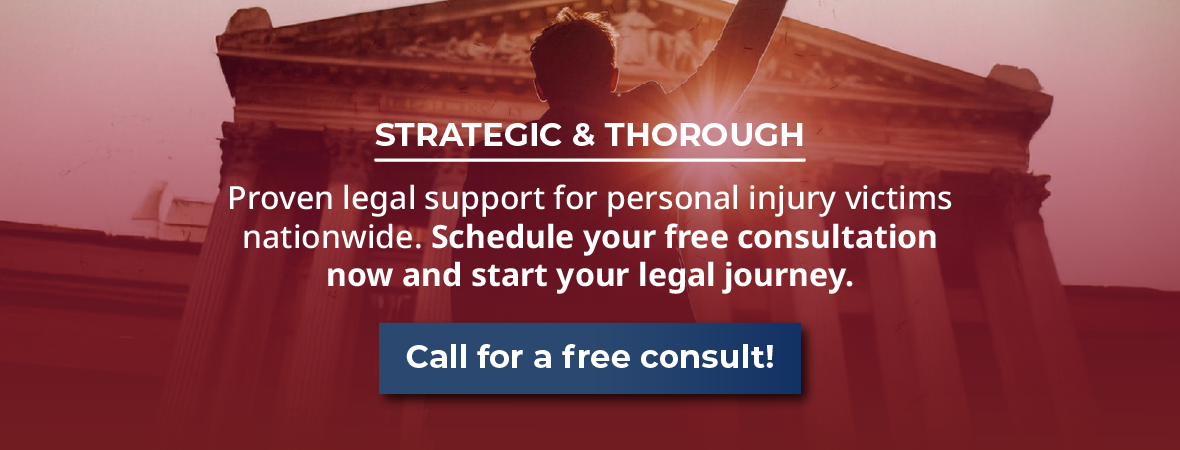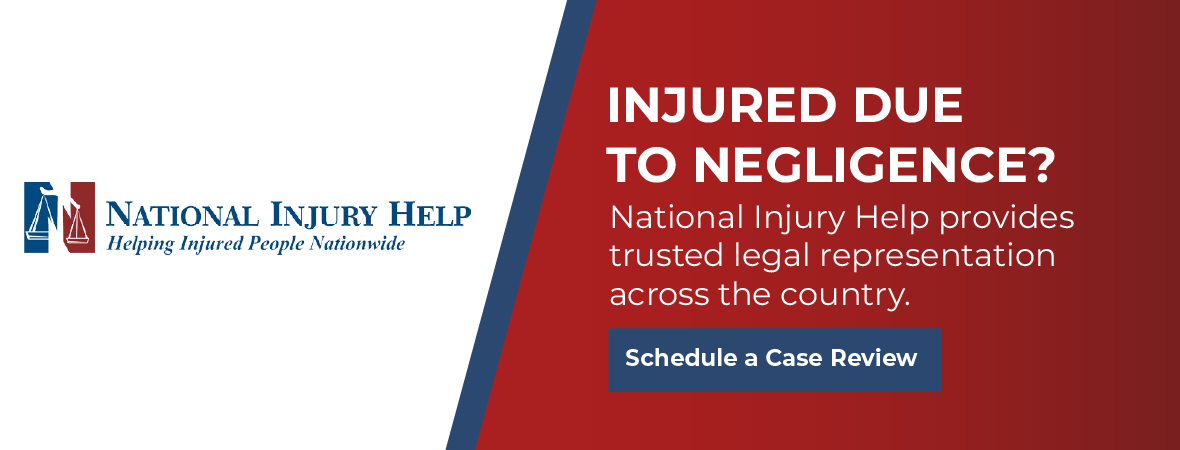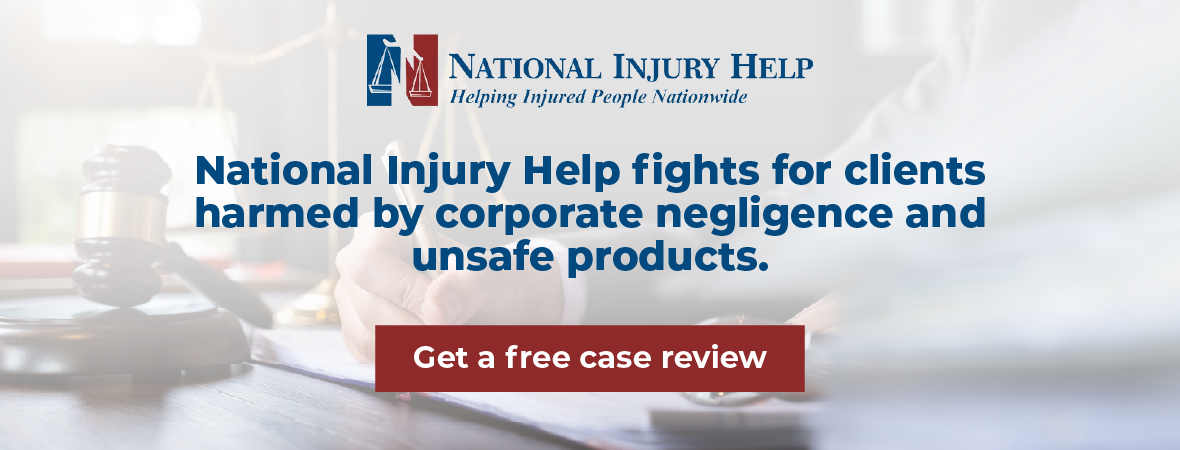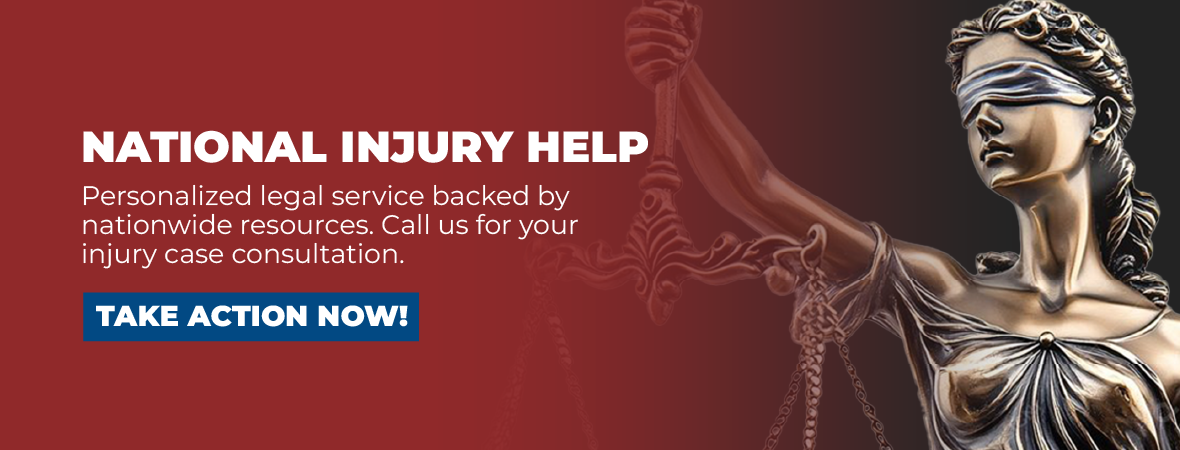Motorcycle accidents in Casa Grande can result in serious injuries and costly medical care. Contact National Injury Help today by calling 1 (800) 214-1010. We are here to stand up for your rights and support your recovery.
Motorcycles bring excitement, independence, and a special bond with the open desert. We see riders every day on Interstate 10, Florence Boulevard, and Pinal Avenue enjoying the sunshine that makes Casa Grande special. Unfortunately, we also see the aftermath when a careless driver looks down at a phone, swerves without warning, or rolls a stop sign at just the wrong moment. A motorcycle crash is not an ordinary fender-bender. It can shatter bones, damage nerves, and leave families wondering how they will cover bills and keep food on the table. That is why you are here. You want real answers and a clear plan.
We understand the physical pain that comes from broken ribs, torn ligaments, and pounding headaches. We understand the emotional strain that follows sleepless nights and endless medical appointments. We understand the financial shock that hits when you open a new hospital bill or when an employer pressures you to return to work before you are ready. Our job at National Injury Help is to shoulder those stresses so you can focus on healing.
Riders face unfair bias. Insurance companies often treat every motorcyclist as a thrill seeker who caused the crash. That is wrong, and it is a tactic to pay less money. A local lawyer who knows Casa Grande roads, doctors, and courtrooms can fight back against that stereotype.
Why Motorcycle Accidents Are So Dangerous
Before we dive into legal details, we need to understand the special risks that make motorcycle wrecks more severe than typical car collisions. Knowing these risks helps you explain your injuries to doctors, claim adjusters, and, if needed, a Pinal County jury.
Minimal Protection for Riders
Here is a quick overview of why a motorcycle offers so little protection compared with a car.
- A motorcycle has no steel frame to absorb impact. When a crash happens, your body becomes the crumple zone.
- The vehicle does not come with airbags or side curtain restraints. Your only barrier is the gear you wear.
- Motorcycles have no seat belts. In many crashes, you are thrown from the bike and strike other objects before coming to rest.
- Even a low-speed slide can cause serious injuries because pavement grinds through clothing in seconds.
Driver Negligence
Many motorcycle crashes begin with a split-second mistake by another driver.
- Car and truck drivers fail to check blind spots before changing lanes on Interstate 10. That single missed glance can push a rider into the median.
- Some drivers roll through a stop sign because they misjudge an oncoming bike’s speed.
- Tailgating leaves almost no stopping distance. When the rider slows for traffic, the vehicle behind slams straight into the rear wheel.
Road Hazards Affect Motorcycles More
Road conditions that barely rattle a car can flip a motorcycle.
- Potholes can force the front tire sideways, throwing the rider to the ground.
- Loose gravel from nearby construction scatters across Peart Road, stealing traction on corners.
- Uneven steel plates covering utility work create a slick surface that sends the bike sliding even at low speeds.
Speed and Visibility
Size and speed combine to raise danger levels.
- Motorcycles have a smaller profile, so drivers often overlook them at night or during bright desert glare.
- A driver may see only a single headlight and assume the bike is farther away, pulling into your path during a left turn.
- Even a minor increase in speed shortens reaction times and lengthens stopping distances for everyone on the road.
Common Causes of Motorcycle Accidents in Casa Grande
Casa Grande roads blend local farm traffic, interstate travelers, and fast-moving commuters. Below are causes we have documented again and again in accident reports.
Left-Turn Accidents
When a car turns left across traffic, it must yield. Many drivers misjudge a motorcycle’s speed and distance. The rider has the right of way, yet ends up braking hard, laying the bike down, or striking the passenger-side door.
Unsafe Lane Changes
Interstate 10 and Florence Boulevard both carry heavy traffic. Drivers change lanes quickly to beat congestion. If they fail to check side mirrors or blind-spot indicators, they drift over the painted line and sideswipe a rider.
Distracted or Impaired Driving
Phones, navigation screens, and fast food create distractions that last precious seconds. Alcohol, recreational drugs, and prescription medication slow reaction time even more. When a distracted or impaired driver causes a crash, we gather phone records, toxicology reports, and witness statements to prove negligence.
Dooring or Sudden Vehicle Entry
On city streets, a parked driver may swing a door open just as a motorcycle passes. In residential neighborhoods, a driver may back out of a driveway without looking. These actions leave a rider no time to brake or swerve.
Road Conditions
Construction zones or gravel washouts after summer monsoon storms create slick, uneven surfaces. Rural roads that cross irrigation canals can develop large cracks. We photograph these hazards quickly before crews repair them and erase evidence.
Common Motorcycle Accident Injuries
No two crashes are alike, but certain injuries appear in medical charts again and again. Knowing the range of possible harm helps you track symptoms, push for specialist care, and demand fair compensation.
Traumatic Brain Injuries (TBI)
The human brain is incredibly complex and incredibly fragile. Even when a rider wears a helmet, the brain can still suffer trauma from a sudden stop, a roll, or a violent impact with the road or another vehicle.
Mild TBIs, such as concussions, often cause:
- Headaches and nausea.
- Short-term memory loss.
- Sensitivity to light or noise.
- Difficulty concentrating or speaking clearly.
These symptoms may appear hours or days after the crash. They can linger for weeks or even months, disrupting work and daily activities.
Moderate to severe TBIs can lead to:
- Loss of consciousness.
- Slurred speech or confusion.
- Long-term memory issues.
- Personality changes or mood swings.
- Impaired coordination or balance.
Recovery often requires months of physical and cognitive rehabilitation. Victims may need therapy to relearn how to speak, walk, or perform everyday tasks.
We work closely with neurologists, neuropsychologists, and therapists to track your recovery, compile medical records, and prove exactly how the brain injury has changed your life. Cognitive testing, MRI scans, and occupational assessments all support your motorcycle crash claim in AZ and help us seek the highest possible compensation.
Spinal Cord Injuries and Paralysis
The spine controls movement, feeling, and reflexes in nearly every part of the body. When it’s damaged, the effects can be devastating.
Spinal cord injuries are classified as either:
- Incomplete, meaning some movement or feeling remains.
- Complete, meaning full loss of sensation and movement below the injury site.
These injuries often result from high-impact crashes where the rider is thrown from the bike or lands awkwardly. Common symptoms include:
- Numbness or tingling in the arms or legs.
- Difficulty breathing or loss of bladder control.
- Muscle weakness or paralysis.
Treatment may involve emergency surgery, spinal stabilization, months of rehabilitation, and the use of mobility aids like wheelchairs or walkers. For some, life never returns to the way it was before.
We account for these lifelong changes in every case we handle. This includes costs for:
- Home modifications (ramps, accessible showers).
- Medical equipment (power wheelchairs, transfer lifts).
- In-home caregivers and ongoing physical therapy.
These future expenses must be calculated early so that you’re not left without financial support later.
Road Rash and Soft-Tissue Injuries
“Road rash” may sound minor, but in reality, it can be one of the most painful and difficult injuries to heal. When skin slides across pavement, gravel, or asphalt, it peels away in layers, sometimes all the way to the muscle or bone.
There are three degrees of road rash:
- First-degree: Surface-level scraping that may heal with ointment and bandages.
- Second-degree: Deeper abrasions that break the skin and risk infection.
- Third-degree: Severe injuries that may require surgical skin grafts and leave permanent scarring.
Even when the wounds heal, deep tissue damage can remain. Torn muscles, ligaments, or tendons are harder to detect at first but may result in:
- Chronic pain.
- Limited range of motion.
- Weakness or instability in joints.
Soft-tissue injuries affect your ability to drive, walk, lift, and even sleep comfortably. We include physical therapy, injections, massage therapy, and future treatment costs in every injury calculation.
Broken Bones and Joint Damage
Fractures are extremely common in motorcycle crashes. Unlike drivers who remain inside a car during a collision, riders are often thrown from the bike or crushed under it. Common fracture sites include:
- Wrists and arms (from bracing during a fall).
- Legs and ankles (from being pinned under the bike).
- Ribs, collarbones, and shoulders (from impact with the ground or other vehicles).
Joint injuries can be even more disruptive than simple breaks. Damage to the knees, hips, or shoulders may involve:
- Torn ligaments, such as ACL or rotator cuff injuries.
- Dislocations that require surgery.
- Permanent instability or weakness that limits mobility.
Treatment for these injuries can include metal screws, plates, rods, and months of physical therapy. These treatments are expensive, and recovery may involve time off work, missed family events, and a permanent reduction in your quality of life.
Psychological Trauma
Not all injuries can be seen on an X-ray. Emotional trauma after a serious crash is real and valid. Motorcycle accident victims often relive the crash in their minds or feel overwhelming anxiety when they get near a bike again.
Common emotional symptoms include:
- Nightmares or flashbacks.
- Anxiety in traffic or fear of riding again.
- Depression, mood swings, or social withdrawal.
- Sleep disturbances and appetite changes.
We always recommend that victims seek counseling or therapy. A licensed mental health professional can help you process the trauma and develop coping strategies. These sessions also create a paper trail that proves the emotional harm you’ve suffered.
Emotional injuries have legal value. We include mental health diagnoses, therapy costs, and emotional distress damages in every case we file. Juries often understand that emotional pain can linger even longer than physical scars.
What to Do After a Motorcycle Crash in Casa Grande
The steps you take in the first minutes and days after a crash shape every part of your legal claim. Use this checklist to protect health, evidence, and financial recovery.
Seek Immediate Medical Attention
Your safety and health always come first.
Call 911 or ask someone nearby to make the call if you’re unable to do so. Emergency medical technicians (EMTs) will arrive quickly to assess your condition and transport you to a nearby hospital, such as Banner Casa Grande Medical Center or the closest trauma center in the area.
Even if you feel “mostly fine,” do not skip this step. Many life-threatening injuries, including internal bleeding, concussions, or organ damage, can be invisible in the first hours after impact. A prompt medical exam ensures you receive treatment fast, and it also creates a clear medical record that ties your injuries directly to the crash.
That dated, professional diagnosis will later be one of the strongest pieces of evidence in your claim.
Call the Police and File a Crash Report
Arizona law requires that crashes resulting in injury or significant property damage be reported to the police. When officers arrive at the scene, they gather statements from drivers and witnesses, take measurements of the crash site, document vehicle damage, and issue a preliminary assessment of fault.
Make sure to speak clearly, stick to the facts, and avoid guessing or assuming anything. If you don’t know how the crash happened, simply say so. Do not say “I’m sorry,” even politely, as it may be misinterpreted as admitting fault.
Before leaving the scene, ask for the police report number. This helps your lawyer pull the full document within days. That crash report often becomes a foundation for your injury claim. Even if fault isn’t assigned immediately, the officer’s notes and diagrams may support your side of the story.
Document the Scene
If your injuries allow it and you can move safely, use your phone to capture photos and videos of everything around you.
- Take wide shots to show the overall crash scene: vehicle locations, street signs, traffic lights, and road layout.
- Then take close-ups of license plates, bike damage, broken glass, tire skid marks, and any visible injuries.
- Don’t forget to document weather and road conditions, such as standing water, potholes, loose gravel, or poor lighting.
Your phone’s timestamp will attach a digital record to each image. These visual records become key when adjusters, lawyers, or jurors need to understand exactly what happened.
If you were wearing a helmet or protective gear that got damaged in the crash, keep those items. Torn clothing, cracked visors, and scuffed gloves all serve as physical proof of the force and direction of the impact.
Get Contact Information From Witnesses
Eyewitnesses are incredibly valuable in motorcycle crash claims. Unlike car collisions, where damage patterns often speak for themselves, motorcycle cases can become a “he said, she said” situation.
Bystanders can confirm:
- Who ran a red light
- Whether a turn signal was used
- If the driver looked away before the crash
- What they heard or saw in the moments before impact
Approach people calmly and politely. Ask for their name, phone number, and a quick summary of what they saw. You don’t need them to make a full statement right there; your attorney can follow up later.
Remember: Many witnesses leave as soon as police open up the road. If you wait too long to collect this information, the opportunity may be gone.
Contact a Motorcycle Accident Lawyer
You are not required to hire an attorney, but having one changes everything.
As soon as you hire a motorcycle accident lawyer, they take over the heavy lifting. While you focus on healing, your legal team will:
- Send preservation letters to businesses near the crash site asking them to save security footage.
- Hire investigators to visit the scene, measure distances, and document road conditions before anything changes.
- Handle all communications with the at-fault driver’s insurance company, protecting you from tricky questions or pressure to settle early.
Most injury law firms offer a free consultation. At National Injury Help, you don’t pay a dime unless we win your case. We advance all costs upfront, including records requests, expert opinions, and filing fees. That means no financial risk to you.
Avoid Costly Mistakes in the Days Ahead
Even after the crash scene clears, the choices you make can still impact your claim. Here are some important dos and don’ts:
Do:
- Follow all medical advice. Go to follow-up appointments, take medications as prescribed, and attend therapy sessions.
- Keep a symptom journal. Note down your pain levels, sleep issues, and emotional struggles. These daily entries support your claim for pain and suffering.
- Save every receipt. Gas mileage to therapy, over-the-counter medications, and home modifications all count toward damages.
Don’t:
- Post on social media. Insurers may monitor your accounts and twist harmless photos to say you aren’t really hurt.
- Give a recorded statement to insurance adjusters without legal advice. Your words can be used against you, even innocent ones.
- Assume you are at fault. Many riders blame themselves, but the law doesn’t work that way. Let an attorney review the facts first.
Focus on Recovery While We Handle the Rest
Motorcycle crashes are physically and emotionally draining. You don’t have to carry the burden of paperwork, deadlines, or insurance negotiations alone. At National Injury Help, our job is to carry that load so you can concentrate on healing.
We know what it takes to win a motorcycle crash case, from reconstructing accident scenes to working with orthopedic surgeons and neurologists. If you’ve been hurt in Casa Grande or nearby, reach out to our team. The sooner we get involved, the better we can protect your claim and position you for full and fair compensation.
Arizona Motorcycle Laws Every Rider Should Know
Arizona laws affect liability, coverage, and deadlines. Understanding these rules shows why local representation matters.
Helmet Laws
Arizona requires helmets for riders and passengers under eighteen. Adults may ride without one, but we always recommend helmet use because head injuries carry lifelong impact. Wearing a helmet also reduces arguments by insurers that you failed to protect yourself.
Lane Splitting Rules
Lane splitting, riding between two lanes of slow or stopped traffic, is not legal in Arizona. If a crash occurs while splitting lanes, the other side may argue that you share fault. We examine traffic videos and witness statements to show who truly caused the collision.
Motorcycle Insurance Requirements
Arizona mandates a minimum of twenty-five thousand dollars for bodily injury per person, fifty thousand per accident, and fifteen thousand for property damage. Those numbers rarely cover surgery, therapy, or long-term care after a severe crash. We locate additional coverage, including underinsured motorist and umbrella policies, to fill the gap.
Comparative Negligence
Arizona follows pure comparative negligence. You can recover damages even if you share fault. If a jury rules you twenty percent responsible, your total award drops by twenty percent. Our job is to minimize your percentage by showing clear evidence of the driver’s negligence, defective road design, or faulty vehicle part.
Statute of Limitations
You have two years from the date of the crash to file a personal injury lawsuit. Claims against government agencies require a formal notice far sooner, usually within 180 days. Missing a deadline almost always ends your right to recover. We track every date with case-management software, so no timetable slips through the cracks.
Who May Be Liable in a Motorcycle Accident?
Liability can involve many parties. A thorough investigation looks beyond the driver who appeared to cause the crash.
Negligent Drivers
Most crashes start with a distracted, speeding, or careless driver. We subpoena phone records, analyze brake-light data, and review dash-cam footage to prove fault.
Commercial Vehicle Operators or Employers
Delivery trucks, construction pickups, and corporate fleets operate across Casa Grande. If an on-the-clock driver causes a crash, the employer may share responsibility for training failures, unrealistic schedules, or poor vehicle maintenance. Commercial insurance policies often provide higher limits, giving a better chance to cover full medical costs.
Government Entities
Unsafe road design, broken traffic signals, or unfilled potholes can contribute to wrecks. Claims against the City of Casa Grande, Pinal County, or the State of Arizona require special notice letters and shorter filing periods. We handle these steps to protect your rights.
Motorcycle or Parts Manufacturers
A stuck throttle, exploding fuel tank, or defective brake pad can turn a simple ride into a catastrophe. Product liability law lets you pursue compensation from the manufacturer or distributor. We preserve the bike, hire engineers to test parts, and trace failure back to the source.
How a Casa Grande Motorcycle Accident Lawyer Can Help
Hiring a lawyer is about far more than paperwork. It is about trust, confidence, and making sure every responsible party pays the right amount.
Investigate the Accident Thoroughly
Our team inspects helmets, jackets, and the motorcycle itself for paint transfer, impact points, and deformation. We use drones to create overhead maps of the scene and overlay skid marks with speed analyses.
Accident reconstruction experts transform raw data into clear visuals that convince adjusters and jurors. We also gather full medical records, including radiology images, operative notes, and therapist progress reports.
Handle Insurance Negotiations
Insurance adjusters call quickly, often within hours. They may ask for a recorded statement or offer a fast settlement. Quick money is tempting when bills pile up, but it is rarely fair.
We review policy limits, demand full valuation, and push back against biker bias. All phone calls, letters, and emails flow through our office, so you can focus on recovery.
Calculate the Full Value of Your Claim
Future costs matter as much as current bills. We consult life-care planners who forecast surgeries, adaptive equipment, and prescription needs. Vocational experts calculate lost earning capacity if you cannot return to your career.
Pain and suffering numbers account for daily struggles such as lifting a child or climbing stairs. By combining these elements, we present a single demand that reflects every aspect of your loss.
File a Lawsuit if Settlement Fails
Most cases settle, but trial preparation gives us leverage. We draft complaints, exchange evidence through discovery, take depositions, and file motions in Pinal County Superior Court.
If mediation fails, we stand beside you in court, question witnesses, and argue your story. Jurors respect riders who prepare carefully and tell the truth. Our courtroom experience keeps the process organized and clear.
Work on a Contingency Fee Basis
You pay nothing up front. We advance filing fees, expert costs, and record charges. If we win compensation, we collect a percentage that we explain in writing before we start.
If we do not win, you owe us nothing. This structure removes financial risk and aligns our success with yours.
What Compensation Can You Recover?
Every crash is different, but compensation usually falls into the categories below. We include each one when evidence supports it.
Medical Expenses
Emergency transport, imaging scans, surgeries, hospital stays, outpatient therapy, assistive devices, home nursing, and prescription medication all count. We ask providers for written future-cost estimates to include in settlement talks.
Lost Wages and Reduced Earning Potential
If you miss work for surgery or therapy, those paychecks belong in your claim. If injuries force a job change or early retirement, we use economic projections to show what you would have earned over a normal career.
Property Damage
Repair bills for your motorcycle, helmet, gloves, jacket, boots, and even a destroyed phone or watch belong in the demand. We collect manufacturer price lists, dealer quotes, and appraisals to document value.
Pain and Suffering
This category addresses physical pain, sleepless nights, fear of riding again, and loss of hobbies you once loved. Because it lacks receipts, we rely on witness statements, daily pain journals, and counseling notes to show intensity and duration.
Punitive Damages
Arizona allows punitive damages when a defendant’s conduct shows conscious disregard for safety. Drunk driving, street racing, or knowingly selling defective parts can trigger this extra category. Punitive awards punish the wrongdoer and deter similar conduct.
FAQs About Motorcycle Accident Claims in Casa Grande
Do I need a lawyer if I was wearing a helmet and the police blamed the other driver?
Yes. Even clear-cut cases face delays, paperwork hurdles, and settlement pressure. A lawyer protects your timeline, tracks bills, and negotiates for full value.
Can I still recover money if I was partly at fault?
Yes, you can still recover money even if you were partly at fault. This is because Arizona’s comparative negligence rule lets you collect reduced damages based on your percentage of blame. For example, if you were ten percent at fault, you still recover ninety percent of the losses.
How long does a typical case take?
Minor injury cases may settle in six to nine months. Severe injury cases often last twelve to eighteen months. If a trial is necessary, the timeline may extend, but steady preparation keeps things moving.
What if the driver fled the scene and police never found them?
If the driver fled the scene and was never found by the police, you can pursue an uninsured motorist claim under your own policy. We review coverage, locate traffic-cam footage, and coordinate with law enforcement to track possible suspects.
Should I speak to the insurance adjuster?
Give only basic facts like your name, contact information, and the date and location of the crash. When speaking with the insurance adjuster, decline recorded statements and refer all questions to us. Anything you say can be used to lower your settlement.
Contact a Casa Grande Motorcycle Accident Lawyer Today
A biker injury in Casa Grande can change life in seconds. Physical injuries limit movement, emotional stress fills quiet moments, and financial worries grow louder each week. You do not have to fight alone. National Injury Help lives and works in Pinal County. We know Casa Grande streets, local doctors, and the courtroom staff who will process your case. That home-field knowledge speeds paperwork and strengthens negotiation.
We never charge for an initial consultation. You can meet us in person, by phone, or through a video call. We will review your accident report, medical records, and insurance policies at no cost. If you choose us, you pay nothing up front and nothing at all unless we win.
We proudly serve riders in Casa Grande, Coolidge, Eloy, Arizona City, Stanfield, and the surrounding desert communities. Our staff answers phones day and night because crashes do not follow business hours.
If you or a loved one were hurt in a Casa Grande motorcycle accident, call National Injury Help at 1 (800) 214-1010 today. Together, we will seek every dollar you need for medical care, lost wages, and a secure future. Let’s start your path to recovery right now.

